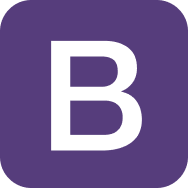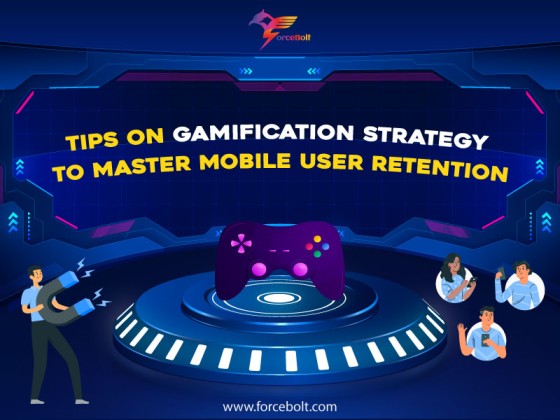Sharing is caring!
The Gamification market has enormous potential and is expected to reach $30.7 billion in 2025. It will increase by 27.4 % from a value of $9.1 billion in 2020.
Strategies are crucial for your mobile App for longer retention of users and better user satisfaction. An App Gamification Strategy also serves better user engagement.
So Let’s dive deep into the world of Gamification, and have a look into Gamification Strategies and why to consider an App Gamification Strategy for Mobile Apps.
Gamification of Mobile Apps
Gamification is a strategic way that includes game-like elements and dynamics to your App to serve the purpose of user engagement and retention.
An example to cite here is Codecademy Go, which is an example of Gamification in apps for e-learning. It uses elements like badges and points.
The Badges are awarded based on acquiring specific skills and points for each completed exercise. It is possible to gamify various apps like finance, e-learning, health and fitness, and many more.
There are many techniques to add Gamification to your App. Let’s understand the methods to add Gamification to your App.
How To Add Gamification To Your App?
The techniques are:
- Rewards
Rewards are quite popular among users. The more return you get, the more interest you will have in pursuing that subject. Games always make use of these rewards for specific tasks.
- Quizzes
Fun quizzes are ways to sustain your interest while learning faster. An example is Kids Academy, which uses gamified quizzes to improve learning outcomes by keeping track of student progress over time and finding the intervention areas.
- Levels
Levels in Gamification help to motivate users. They are powerful because they are easily understood and customizable. They can reflect your brand identity. They often appear in health and fitness apps where the level achieved by you is something that you aspire for. One example to cite this is a productivity app that uses karma points as rewards for unlocking new levels – from “Beginner” to “Enlightened.”
- Progress Bar
Adding a progress bar in your App helps to offer instant feedback. It fills up as the user finishes a task. It can build brand trust and user engagement. Moreover, it makes your UX easy. An example of a Progress Bar would be progress bars used in the LinkedIn app. It helps to show the user that a strong profile increases their probability of getting hired or networking with others. It triggers Zeigarnik, reminding them of unfinished tasks every time they log in.
- Leaderboards
The leaderboards drive the competitive spirit in human beings. Leadership, in the simplest form, appears as a high-score list. It goes a long way in creating an active user base who engage with each other.
The above reason is for using leaderboards in App Gamification. It is about getting better ranks as the users beat each other. They can identify the best performers in a specific activity.
An example would be Growth Engineering Impact Suite, whereby by adding leaderboards, the learners enable the virtual rewards to appear more lucrative. The position in leaderboards varies based on their scores.
- Adding Friends
The addition of friends helps the users to interact more with each other. It provides considerable amounts of organic downloads with a loyal fan base allowing them to spread the word about your App. An example is Fitbit, a wearable fitness tracker that enables users to find friends who use Fitbit and compete in different sports-related challenges.
How to Build An Effective App Gamification Strategy?
You can build an App Gamification Strategy based on the current retention rate, the sufficiency of organic traffic, a clearly defined baseline, and the goals you want to achieve. It revolves around data, and it is essential to know the target audience and the type of content that catches their attention before you chalk out a strategy.
You rely heavily on assumptions but must resort to competition analysis to find how competitors are experimenting with various techniques. Then you decide on the correct gaming elements used for your niche market. Next, you promote your App with in-app events, daily tasks, etc.
Why Consider An App Gamification Strategy For Mobile Apps?
The reasons to consider an App Gamification Strategy for Mobile Apps are:
- Increases App Retention and User Engagement
- Simplifies the Onboarding Process
- Improves Mobile User Acquisition
Increases App Retention & User Engagement
The rewards and leaderboards will help the users to come back frequently. With improved user experience comes more sticking around of users.
Simplifies the Onboarding Process
Gamification improves user experience during the onboarding process. When you show how well your App works with simple tasks and rewards, users are bound to learn your app features quickly and increasingly use them.
Improves Mobile User Acquisition
Increase your organic traffic with Gamification. Better the user experience is, the more the users will talk about your App.
The users will share their experiences in their social circles about your rewards, challenges, and leaderboards and add friends. They will love to compete with each other and share their badges and achievements.
Conclusion
App Gamification Strategy plays a significant role in achieving longer retention of users and better user satisfaction. It can boost your app retention rates by 500 % by adding gamification elements and enhancing the user experience simply by adding rewards, leaderboards, quizzes, levels, and many more elements. However, it would be best if you find the perfect fit ideal for your app and the correct gamification elements for your App through market research and competition analysis. It also increases your organic traffic and improves user experience during the onboarding process. The app marketing strategy is equally important as your App Gamification Strategy, spreading the right messages across the proper channels.
If you want to grow your app retention, adopt an App Gamification Strategy with guidance from our experts at ForceBolt, a top-notch Full Stack Development Agency that offers affordable, end-to-end Full Stack Development Services. Reach out to us today to discuss your project needs and explore the top tips on building a successful App gamification strategy.

Abhishek Singh
Full Stack Technical Lead
A highly motivated Senior Full Stack Developer who is self-driven and actively looks for ways to contribute to the team. He possesses rich expertise and deep knowledge about a good software development process that includes documentation, testing, documentation, and collaboration. With solid communications and reasoning skills, he delivers high performance and quality in his projects. He is always open to assist other teams in understanding project requirements so that collaboration can happen in the best possible ways in an environment conducive to the business.













